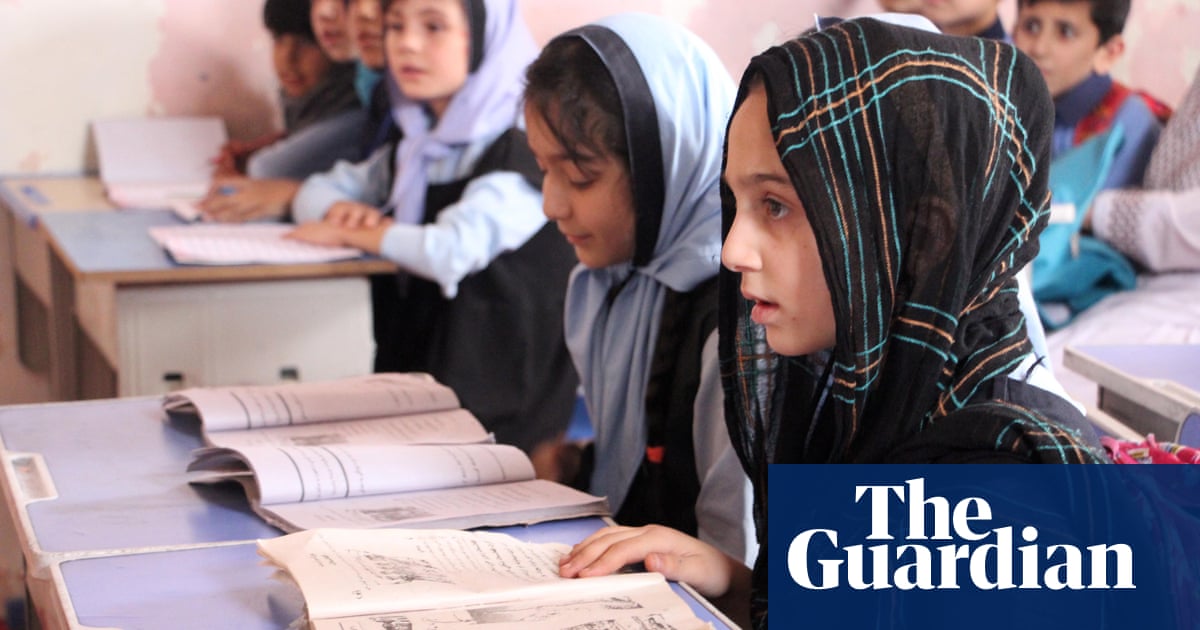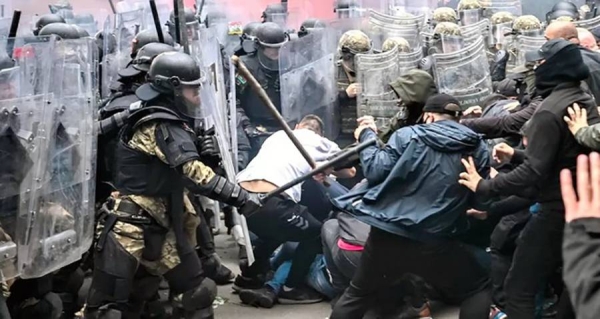
Pity those who flee. Pray for those who remain. How many times have those terrifying pleas occupied our minds over recent decades? Once again, a protracted conflict that already has witnessed so much loss and destruction sees the desperate risking all to save all. The indelible image of the young Afghan footballer who died after clinging onto a plane’s landing gear or the Afghan baby being lifted over a wall at Kabul airport should scar our memories.
Afghans have trodden this path before. In the 1990s, Afghans constituted the largest refugee population in the world, and even in 2021, there are 2.5 million Afghan refugees, a number that will surely rise once more.
Those left behind will be clutching at the slenderest of hopes. Will Taliban 2.0 be less brutal, restrictive and exclusive? Time will tell, but few Afghan women hiding in their homes feel confident. The US says that the Taliban have told them that they will permit Afghans to leave after Aug. 31 if they wish to do so. I doubt that is a guarantee that will provide comfort.
Currently the UN refugee agency says there are around 500,000 internally displaced people in Afghanistan. As in other conflict zones, spare a thought for those who cannot move, trapped where they are. Afghans will also be hoping that the country is not cut off from international assistance, so sorely needed. Any sanctions could be life threatening to many. The Afghan health system, for example, is almost totally dependent on foreign aid. Already banks are closed and stores are running out of food. Drought is also on the horizon.
Mary-Ellen McGroarty, the World Food Programme’s country director in Afghanistan, delivered a stark warning: “Even at the beginning of the year we already had 14 million people in a crisis of hunger. Given the extremely high needs right across the country, we just have enough food to get us through September. We urgently need funding, $200 million, and we need it now because we need to get food into the country before the winter starts and areas are cut off by snow.”
For those who are evacuated or flee, differing experiences await. Let’s slay one myth. As with nearly all refugee crises, it will be the neighboring countries that take in the overwhelming majority of exiles. Pakistan and Iran have done so in the past with Afghan refugees. Tajikistan has promised to take in 100,000 Afghans. The refugee crisis will not be American or European. It is local. Just as Lebanon, Jordan and Turkey required help in handling millions of Syrian refugees, so, too, will these countries. But at a time of squeezed budgets, will they get it?
For Afghan refugees, camps in neighboring countries will be no joyride. Dislocation brings trauma, but also social and cultural challenges. Pashtuns have a conservative culture that does not sit well with crowded refugee camps where privacy will be at a premium. Safety may also not be assured. Children will almost certainly suffer, vulnerable to child exploitation of all forms.
At the time of writing, about 12,000 people had been evacuated from Kabul airport. Many of those may be the fortunate who receive asylum courtesy of a major power. However, the doors are barely ajar, and the days when refugees are accepted purely on the basis of need are numbered.
But, also, how warm will their welcome be? The initial signs are not positive. Even those who worked for various NATO states were not guaranteed evacuation. The UK at first refused to let in those who had worked to provide security to its embassy. At least the British government did a U-turn on this, something Australia has yet to do.
Greece, meanwhile, lost no time in announcing that it has completed its high-tech, 25-mile border wall with Turkey. Greek authorities are clear that this is to stop any influx of Afghan asylum-seekers. “Our country will not be a gateway to Europe for illegal Afghan migrants,” Notis Mitarachi, the migration minister, said.
The Greek position is somewhat understandable given that it was left to take the brunt of the 2015 refugee influx when many European states failed to take in their fair share. Turkey also believes that hosting 3.5 million Syrian refugees is too much and that it should not be expected to take in more.
The richer larger states are not stepping up to the plate, either. German Chancellor Angela Merkel, who famously declared “Wir schaffen das” (We can do it) back in 2015, is singing a very different tune. Germany this time will take in about 10,000 refugees, but she insists neighboring countries must take the lion’s share. President Emmanuel Macron said that France should “anticipate and protect itself from a wave of migrants.” He added: “Europe alone cannot assume the consequences of the situation” as if it had done so in the past.
The UK has just replicated the miserly offer it made to Syrian refugees in 2015, to take in 20,000 over five years. Even then, research shows that if the 2015 precedent is anything to go by, the refugees will not be equally distributed around the country but largely thrust on poorer areas in the north. Canada said that it will also take 20,000. Yet the US, which bears the greatest responsibility, will probably end up taking in similar numbers.
One wonders how many brilliant Afghan graduates the US and Europe will take in. It is these talented and educated elites who could have been the future for a modern progressive Afghanistan. So many countries in conflict suffer a calamitous brain drain — look at the numbers of Iraqi and Syrian refugees in Europe with university diplomas to get an inkling of what Afghanistan is losing. How many will one day be able or willing to go back? Under what circumstances will they feel safe to return?
Many Afghans will not be able to flee, although the demand seems high. President Joe Biden is sticking to his self-imposed timetable of a full withdrawal by Aug. 31. The Kabul airport route could be closed within days. Biden should listen to appeals from allies and Afghans to extend that date.
One wonders how many brilliant Afghan graduates the US and Europe will take in. It is these talented and educated elites who could have been the future for a modern progressive Afghanistan.
Chris Doyle
What is truly lacking is any genuine admission of responsibility from NATO powers, and particularly the US, for what is occurring. These refugee flows are a direct result of the inept and ill-planned withdrawal as well as Taliban repression. Yet many Afghans, notably women, who are most at risk, are in danger because they took part in Western-backed programs that Western governments were only too happy to promote and use for photo-ops. Writers and journalists are at risk, and even sport stars.
The stunning failure to withdraw with order and honor is being compounded by an even worse failure to protect those we put at risk.
Chris Doyle is director of the London-based Council for Arab-British Understanding (CAABU). Twitter: @Doylech
Disclaimer: Views expressed by writers in this section are their own and do not necessarily reflect Arab News" point-of-view











